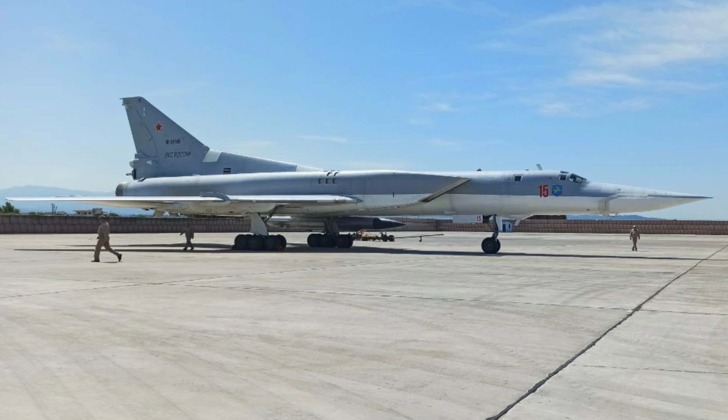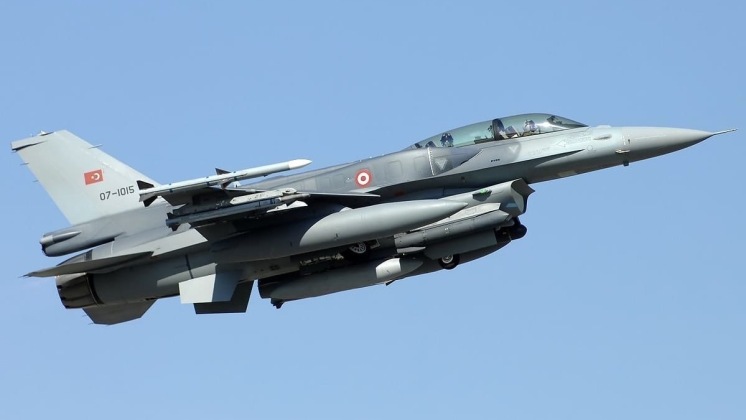On May 17 a number of reports emerged that S-300 surface to air missile batteries fielded by the Syrian Arab Army had been confirmed as operational, and may have been used to fire on Israeli Air Force fighter jets to repel an attack on a Syrian research centre. Reports of missiles having been fired indicate that they were fired ballistically without a radar lock, meaning it was likely that the intention was to fire as a show of force rather than with the intent to neutralise enemy aircraft. S-300s thought to be of the S-300PMU-2 variant were delivered to Syria by Russia from September 2018 but have never been used in combat, although a number of reports have indicated that their sensors may have been used to help guide missiles from other air defence systems to intercept Israeli missiles in the past. Syria was initially scheduled to receive S-300s around 2013, but Israeli pressure on Russia led Moscow to cancel the deal which was the latest of multiple high performance weapons systems denied to Syria since the Soviet collapse as a result of close Russian-Israeli ties. This changed only when Russia accused Israel of having used a Russian Air Force Il-20 surveillance aircraft over Syria as cover causing the destruction of the airplane and deaths of all onboard in September 2018.

Following its delivery to Syria, and despite Syrian crews having been trained over five years prior before an initial order was cancelled, S-300s were notably initially operated by Russian personnel which was seen as a precaution against possible Western, Turkish or Israeli attacks. While these countries had all attacked Syrian personnel they had been more cautious regarding directly attacking Russian forces in the country. It remains uncertain when Syrian forces were given control of the systems, but they were notably not used to repel Israeli or Turkish attacks on the country for over three years including during intense clashes with the Turkish Military from January to March 2020. The activation of the S-300 system follows growing steps by Russia to strengthen the country’s air defence capabilities, including the transfer of new MiG-29SMT fighters as aid and the beginning of regular joint drills including and simulated combat from January 2022. This comes as Russia has expanded its own military presence in Syria, which while initially established to support Syrian counterinsurgency efforts from August 2015 have since been used to house strategic assets including MiG-31K and Tu-22M3 aircraft equipped with hypersonic ballistic missiles that provide a key asset for a potential war with NATO. A stronger Syrian air defence capability is thus seen to be in Russia’s interest, and lessens the burden on Russia’s own forces to protect the country’s airspace as well as Russian military facilities located there. Russia notably also made deployments of its top fighter the Su-35 to Qamishli Airport, a new facility in Syria located near the Turkish border for the first time in October 2021.

The S-300PMU-2 first entered service in the Russian Military in 1997, and is the most capable variant of the S-300P series preceding the introduction of the S-400 in 2007 – which was initially designated S-300PMU-3. The system is capable of engaging up to 32 targets simultaneously, and has an engagement range of 250km if equipped with 48N6E3 missiles, although those in Syria may still rely on the older 48N6E2 with a 200km range and lower speed. Deployed near Damascus, their range allows them to engage high altitude targets deep into Israeli airspace while guarding the capital. The system’s activation may well presage the delivery of more units and more MiG-29SMT fighters to Syria, and possibly even a new offensive by the Syrian Arab Army against foreign forces based on Syrian soil. These include not only the U.S. Military and European allies such as Norway and France, which maintain a stronghold in oil rich northeast Syria and have extracted and profited from oil there on a significant scale, but also Turkish forces which occupy the Idlib governate in the Northwest. Idlib has been referred to by U.S. officials as the world’s largest Al Qaeda stronghold since 2001, with the sizeable terrorist forces based there receiving considerable support from the Turkish state and seeing Turkish personnel embedded in their own units.
Where in 2020 Turkish control of the air provided a key advantage against Syrian forces, Syria’s deployment of S-300s could negate this and potentially pave the way for significant advances. With Turkey lacking stealth fighters or fighters with advanced electronic attack capabilities comparable to the Israeli F-16I, the S-300PMU-2’s activation in Syrian hands may well be a more imminent challenge to Turkish interest than those of any other country. For Israel, which has launched airstrikes on Syrian targets frequently for close to a decade, the country’s more limited interests in Syria and its reliance on standoff missiles fired from outside Syrian airspace means the risk to its fighters could be considerably lower.
